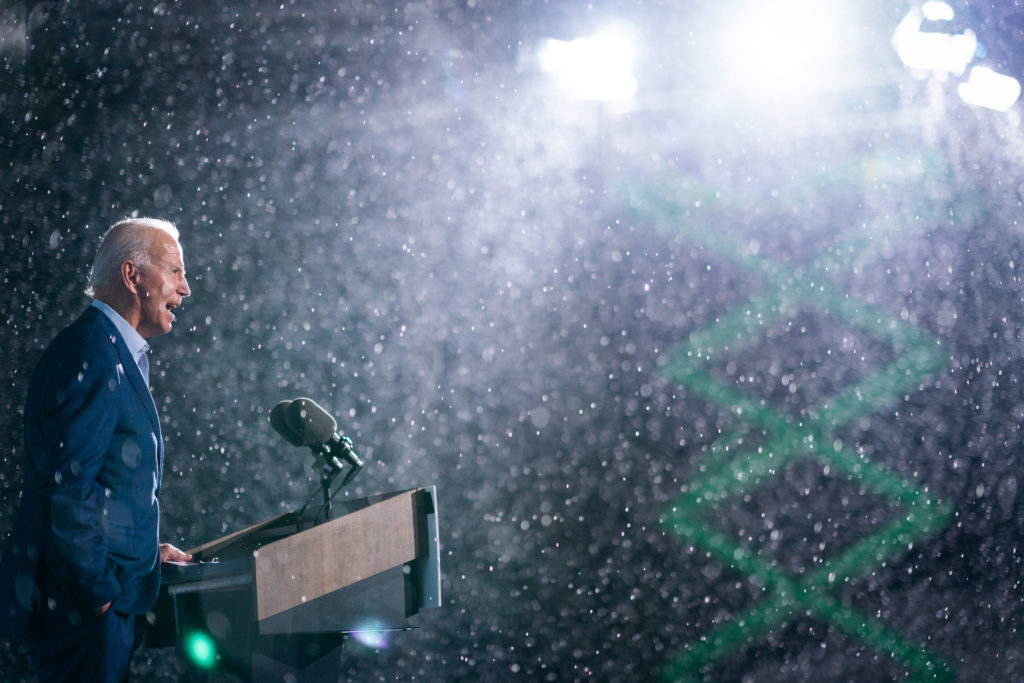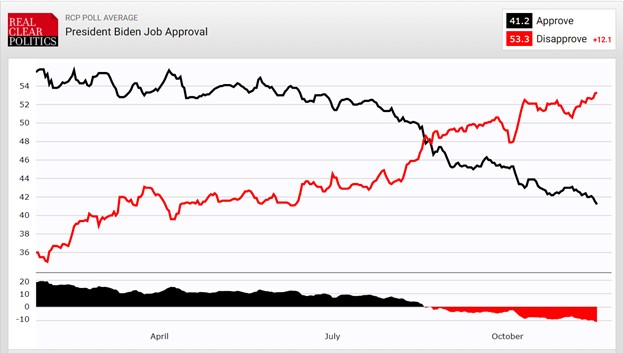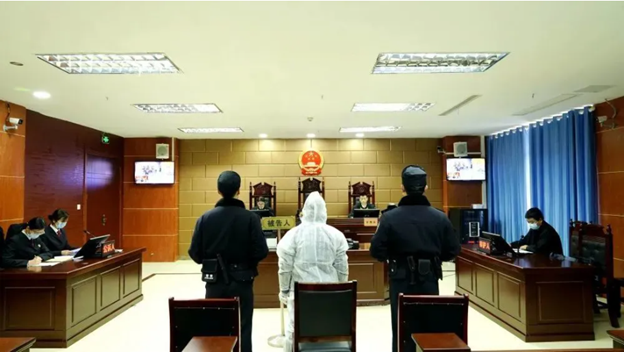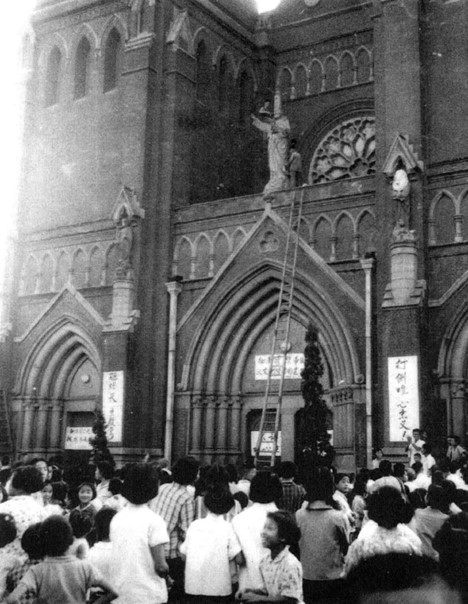EVENTS
Biden’s Plunging Approval Ratings: The China Factor

Commencing with the late summer’s flawed withdrawal of US troops from Afghanistan, accompanied by the deaths of 13 service members in a suicide bombing and the takeover of the country by the Taliban, President Joe Biden has suffered a number of domestic setbacks, including a crisis on the southern border, a lingering pandemic, disrupted supply chains, and a surge in inflation. Third quarter GDP growth came in at an anemic 2 percent.
He has enjoyed no relief on the foreign policy front as well, with North Korea resuming missile firings, China test-firing an advanced hypersonic weapon, and a dust-up with an angry France over the agreement to supply nuclear submarines to Australia.
As of this writing, President Biden’s overall approval ratings as measured by the Real Clear Politics average were stuck in the low 40’s. A key metric – direction of the country – was underwater by more than 30 percent. His numbers on key issues – the economy, immigration, and foreign policy were all down by double digits. For the first time in years, Americans have favored Republicans in the so-called Generic Congressional Vote in several polls. These numbers spell disaster for the Democrats in the 2022 midterm election, with predictions that they will lose 40-70 seats in the House and several in the Senate.


Unease Over Handling of China
Shortly after President Biden’s assuming office on January 20, 2021, the respected Pew Polling organization surveyed how confident Americans were that the new administration could deal effectively with a range of foreign policy challenges. By a margin of 53 to 46 percentage points, Americans felt that the Biden administration could deal effectively with China. This number was the lowest confidence rating on any foreign policy issue, and portended trouble ahead as the new administration sought to meet the China challenge.
On March 18, 2021, Secretary of State Antony Blinken and National Security Advisor Jake Sullivan met with China’s State Counsellor in charge of foreign affairs, Yang Jiechi, and Chinese Foreign Minister Wang Yi in Anchorage, Alaska. The meeting did not go well. Especially disturbing to many Americans was a long diatribe by Yang Jiechi on American ills, in effect a lecture delivered on camera for the benefit of Secretary Blinken and Mr. Sullivan.

A Fox News poll conducted June 19-22 found that 39 percent of Americans approved of Biden’s handling of China; 54 percent disapproved.
This was followed by a CBS News poll conducted July 14-17 that measured how Americans felt about President Biden’s handling of China issues. By a margin of 52-48 percent, Americans disapproved of the way China issues were being handled. A month later, a Gallup poll was conducted. Polled on August 2-17, 2021, Americans gave low marks to President Biden’s handling of relations with China; 39 percent approved and 55 percent disapproved.
As of publication, the Gallup poll is the most recent poll to measure how Americans view President Biden’s handling of China, but it is unlikely to have improved given the low marks recorded on his handling of foreign policy, and given the lack of positive achievements announced in the wake of the virtual summit between Presidents Xi and Biden on November 16, 2021.
China has been much in the news in recent months, and none of the news has been positive. Reports on what American officials call genocide in Xinjiang, Chinese warplanes threatening Taiwan, the dismantling of democracy and civil rights in Hong Kong, the test of two hypersonic missiles, record trade deficits, and China’s alleged practice of hostage diplomacy have taken their toll on how China is perceived in America and around the world. America’s inability to effectively deal with China’s aggressive behavior has impacted how Americans view how the Biden administration’s policy towards China.
As discussed in the above section, Americans have expressed growing disapproval of President Biden’s handling of China. Shortly after publication, a new poll was released that suggests this disapproval has worsened. Coinciding with Biden and Xi’s virtual meeting on November 16, Fox News conducted a poll from November 14-17 measuring, among other issues, Biden’s approach to China. As with other recent polls, it signals a lack of confidence in Biden and his administration.
A majority disapproves of Biden’s handling of China: 55 to 28 percent with 16 percent responding “don’t know.” Compared to Fox News’ last poll from June 19-22, 2021, this is a sharp decrease in approval and a spike in uncertainty. In that poll, disapproval was at 54 percent while 39 percent did approve and 8 percent were unsure.
The toughness of Biden’s approach is in question: 60 percent said that he was “not tough enough” on China, 26 percent said his approach was “about right,” and 10 percent answered “don’t know.” Only 4 percent said that Biden was “too tough.”
The poll also asked respondents to rate their level of concern about China’s military and economic powers, and majorities expressed high levels of concern in both areas. Regarding China’s military power, 70 percent said they were “extremely” or “very” concerned compared to 26 percent that were “not very” or “not at all” concerned. Respondents expressed similar levels of worry over China’s economic power, with 69 percent expressing varying levels of high concern compared to 26 who didn’t. In both areas, those answering “don’t know” came in at between 4-5 percent.
More broadly, this poll’s findings heavily match other recent polls on Biden’s approval (54 to 44 percent). Similar rates of disapproval were consistent for his handling of the economy (58 percent to 36 percent) and immigration (59 to 31). The poll had a margin of error of 3 percentage points.
EXCHANGES
Exchanges is a feature that explores Dui Hua’s expert exchanges and dialogues.
“…protection is at the core of our juvenile justice work.”

Since 2008, Dui Hua’s expert exchanges have facilitated US-Chinese cooperation by focusing on an area dear to both nations: the well-being of youth. The International Symposium on Girls in Conflict with the Law (GICL) offered a view of juvenile justice in China, including recent reforms.
China’s first juvenile court was established in 1984; today, all six circuit courts in the nation have one. The Prevention of Juvenile Delinquency Law and the Law on the Protection of Minors are, with additional various civil codes, the main laws shaping juvenile justice in China. Both have been revised to better focus on rehabilitation.
Dr. Jiang Jihai, Director of Juvenile Offender Office of Research Office of the Supreme People’s Court (SPC) described the importance of these reforms: “It’s fair to say that protection is at the core of our juvenile justice work. If we want to achieve real protection, you don’t just deliver a fair judicial judgment. Our post trial follow-up assistance and education are also very important. We offer psychological assistance, intervention as well as educational assistance. These are all our natural extensions of juvenile justice work.”

During the same webinar, Ms. Dai Qiuying, Director of Center for the SPC’s Protection of Minors of Applied Law Research Institute, identified weak awareness of the law as a major cause of juvenile crime. When making a ruling, she said, the court considers the harm of punishment, conducting a social investigation and interviews to better understand the juvenile’s situation. Articles 7 and 117 of the revised Law for the Protection of Minors provide guidance for the state to support parents in educating their children on the law. Judges serve as adjunct teachers or assistant principals in primary and middle schools using resources like moot courts, cartoons, documentaries, and online courses for legal education.
During “Girls in Conflict with the Law in Hong Kong and Guangzhou,” Professor Zhang Hongwei of Jinan University provided a view of juvenile crime in China, finding that in a population of 27.9 million people under the age of 18, juvenile crime makes up 3.56 percent of all crime in China. Between 2007-2014, 8,800 juveniles were sentenced for the crime of robbery, theft, and intentional assault, accounting for 68.83 percent of all juvenile crimes in Guangzhou.

Professor Eric Chui of City University of Hong Kong presented on a collaborative research project on Hong Kong gang members aged 12 – 24. Looking at gender differences in behavior, social bonds, and gang affiliation, the study found that weak parental attachment predicted acts of theft and violence for males, whereas weakened belief in the legal systems predicted theft, but not violence, for females. Professor Karen Joe Laidler of the University of Hong Kong discussed trends in Hong Kong girl crime across decades. Laidler noted that girls 15 and under were arrested in higher proportions until 2012 despite declines in all age groups and genders for violent crime against property, fraud, and forgery. She is also exploring whether these declines are connected to how youth interact with social media and, consequentially, spend less time in public spaces.

Honorary fellow and professor Anna Wu of the University of Hong Kong provided opening remarks for the GICL’s Asia-based audience. She discussed the effect protests have had on youth, emphasizing the need to help young offenders understand the law and the consequences of their actions. In Hong Kong, courts hear representations from both sides before sentencing, and there are a range of options, including unconditional or conditional discharge, suspended sentence care of protection orders, probation, and community service. Wu also shared thoughts on building a better justice system: “I think we really need to look for new approaches, both within and outside the criminal justice system, to build a community…and to refocus on restorative and reintegrative approaches to the criminal justice system.”
Looking to the future, Judge Jiang noted that “the protection of minors is a very complex social project,” requiring cooperation between “families, schools, social organizations, businesses, the judiciary, and other parts of the government.” Professor Zhang acknowledged as much while looking ahead: “For the past 40 years, we have made remarkable progress establishing our juvenile justice system. We have already tried to differentiate the treatment between an adult and a juvenile. For the next step, we will move further… to differentiate how to treat the girls and boys differently within the juvenile justice system.”
To learn more about the panelists, watch their individual webinars, and read a full list of recommendations visit girlsjustice.org.
PUBLICATIONS ROUND UP
Featured: Human Rights Journal: Criminalizing Disrespect for the National Flag, Part I (October 12, 2021) & Part II (October 25, 2021)

The desecration of national symbols evokes different responses from different governments. In some countries it is an acceptable form of political expression, in others an act that is merely tolerated, and in others a crime. China is among the countries that place broad restrictions on speech to criminalize acts it finds disrespectful to national symbols.
Read Part I here.
Read Part II here.
See also: Prisoner Updates 2021 #8, October 22, 2021: NGO activists admitted into prisons, labor activists missing; Lawyers avoid arrest for trial video release; unrelated charge suggested
JOHN KAMM REMEMBERS
John Kamm Remembers is a feature that explores Kamm’s human rights advocacy prior to and since Dui Hua’s establishment in 1999.
Two Good Priests, Part I

In October 1992, I was in Hong Kong preparing for a trip to China the next month. It would be my tenth human rights trip to Beijing since January 1991. Many of the names of prisoners I raised on those trips had been granted early release, a reflection of Beijing’s concerns over the possibility of losing its bid for the 2000 Olympic Games and the prospect of Bill Clinton defeating George H. W. Bush in the November 3, 1992 presidential election. Clinton had campaigned on stripping China of its Most Favored Nation (MFN) trading status if elected.
Preparations for trips to Beijing typically took several weeks. Appointments with officials in the Chinese government needed to be requested and, if granted, followed up with details including, on my part, the submission of political and religious prisoner lists. More mundanely, I needed to contact my regular driver and book a room at my usual hotel. Appointments with foreign diplomats and Beijing-based journalists also had to be fixed.
For the November 1992 prisoner list, I wanted to include imprisoned Roman Catholic clergy and senior laity, of whom there were more than 100 at that time. In January 1992, I submitted lists to the central government, including to the Religious Affairs Bureau of the State Council, with names of imprisoned Catholic prelates. In May 1992, I was informed of the early release from prison of three high priority underground leaders I had advocated for. This experience was on my mind as I put together my list for the mid-November 1992 trip to Beijing.
Father Giancarlo Politi, a Good Priest
For that first list of Catholic prisoners submitted in January 1992, I had relied for information from Father Giancarlo Politi, a Pontifical Institute for Foreign Missions (PIME) missionary assigned to Hong Kong. Father Politi produced and edited authoritative materials on the Catholic Church in China, gained from first-hand readings, observation, and experience in the field. The priest arrived in Hong Kong in 1970 and began traveling widely in China to make contact with Catholic communities in 1986. He was deeply concerned about the fate of imprisoned Catholic clergy. Politi usually travelled alone on his trips to the mainland, though he was occasionally accompanied by Hong Kong Catholics. These were dangerous trips, fraught with peril.
I reached out to Father Politi for assistance. I gave him a call at his place of work and residence, the PIME House in Sai Kung, Hong Kong. We agreed to meet for a “simple lunch” the next day. I contacted my driver – I was still a consultant to Occidental Chemical drawing salary and benefits, including use of a Mercedes 280SE. I arranged to be picked up at my apartment on Coombe Road the following morning.

Upon arrival at PIME House on November 5, 1992, I was met by Father Politi. He would later recall me as “a big man in a business suit with a driver and a Mercedes.” He ushered me into his office, where desks and shelves were piled high with publications and notes from his trips to China. I thanked Politi for sending me copies of PIME’s AsiaNews – he was editor at the time – and his latest mimeographed list of imprisoned Catholic bishops, priests, and senior laity. These lists informed virtually all of the publications of Western human rights groups that dealt with jailed Catholics.
I asked Father Politi for a complete set of the lists, going back several years. He demurred, saying that the most recent list had incorporated the names of all imprisoned clergy on previous lists.
Politi’s Samizdat
I insisted: “As a businessman, I always try to collect as much information as possible on a transaction,” I said. “It sometimes happens that critically important information is inadvertently omitted from the record.” Politi relented. He called his assistant, a young seminarian, and asked him to put together a complete set of the mimeographed lists, which I likened to samizdat of the old Soviet Union, unofficial publications of dissidents and activists that were widely circulated among networks in the country and abroad.
Politi escorted me to the dining hall, where we were joined by a dozen PIME monsignors and priests. The “simple lunch” turned out to be a feast with plates full of pasta, vegetables, meat and fish, washed down with glasses of chianti. After finishing up, I headed for my car. I was met at the door by the seminarian. He gave me a stack of Politi’s lists.
I was driven back to Hopewell Centre in Wanchai, site of my office. I spread out the copies of Politi’s lists on my conference table and began going through them. I quickly discovered that a name – that of Father Li Fangchun 李芳春 – had been dropped from the most recent list. I called Politi and he confirmed that a terrible mistake had been made. I then prepared an urgent appeal and faxed it, on November 7, 1992, to Vice Minister of Justice Jin Jian with whom I had established a good relationship.
Father Giuseppe Li Fangchun, born in Shangqiu County, Henan Province, in 1935, underwent formation at the Kaifeng Seminary, a regional seminary that served the Kaifeng Archdiocese and other dioceses in Henan Province and Shanxi Province. The seminary was considered one of China’s best, on a par with Shanghai’s Shesan Seminary. It was for many years under the administration of PIME. Kaifeng itself was one of the most Christian cities in the country, sometimes called the Galilee of China. It was also home to China’s largest Jewish community.
Li was ordained in secret in 1957. (Around one dozen Kaifeng seminarians were secretly ordained during the 1953-1957 period.) The last PIME missionary in Kaifeng was expelled from China in 1954. The seminary was closed in 1958 due to “lack of enrollment.”

According to the Chronicles of the Kaifeng Seminary published by the official Henan Catholic Administrative Commission, Li Fangchun was detained for counterrevolutionary activities together with other clergy, including the dean of the seminary, Ma Changren, around the time the seminary closed in 1958. The detentions took place during the Sufan (肃反) Movement to purge counterrevolutionaries. (Ma died in prison in 1962.) Li and the others had allegedly formed a “counterrevolutionary group” that secretly held masses, opposed the consecration of the officially appointed bishop of the Kaifeng Archdiocese, and criticized the official Catholic Patriotic Association. The Sufan Movement took place from July 1955 until early 1958. An estimated 214,000 people were detained; approximately 53,000 died, many by execution.
After his detention in 1958 Father Li was tried and sentenced to 14 years in prison for counterrevolution. He served his sentence at Kaifeng Prison, currently known as Henan Number One Prison, a maximum-security prison that has housed many political prisoners and those awaiting execution over many decades.
He was due to be released from prison in 1972. In that year, the Cultural Revolution, which began in April 1966, was still underway, although its worst excesses had for the most part passed. The Cultural Revolution was a period when the Catholic Church, or what was left of it, was under fierce attack. Churches were ransacked, priests “struggled” and beaten, and worse. I vividly recall being told by the Polish Consul General in Guangzhou – where there was a joint venture shipping company between China and Poland – that the priests at the Catholic church on Shamian Island had been frog marched by Red Guards from the church and lynched from lamp posts on Renmin Road in those horrifying days.

It is not known whether Li Fangchun was released on schedule in 1972 or had his sentence extended. He might have been placed in a re-education through labor camp, maybe in a remote area. He eventually returned to Shangqiu, a city of some 20,000 Catholics, probably in the late 1970s at the start of the Opening and Reform period when repression against Catholics eased. He began his ministry at the reopened Shangqiu South Church.
Father Li’s freedom proved to be short-lived. He was detained again in February 1983 and sentenced to 12 years in prison for counterrevolutionary activities, including membership in a counterrevolutionary group and counterrevolutionary propaganda and incitement. He was sent back to Kaifeng Prison to serve his sentence.
Read Part II here.
Subscribe if you want to receive Dui Hua publications by email.
